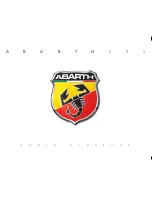
Transmission positions
B
Park position
This prevents the vehicle from rolling
away when stopped.
Only shift the transmission into posi-
tion P when the vehicle is stationary
(
Y
page 141). The parking lock
should not be used as a brake when
parking. In order to secure the vehi-
cle, always apply the electric parking
brake in addition to the parking lock.
If the key is removed from the ignition
lock, the transmission is locked.
The automatic transmission shifts
into P automatically:
R
when the key is removed from the
ignition lock
R
when the engine is switched off
with the transmission in position R
or D and one of the doors is
opened
In the event of a malfunction of the
vehicle's electronics, the transmis-
sion may lock in position P. Have the
vehicle electronics checked immedi-
ately at a qualified specialist work-
shop.
C
Reverse gear
Only shift the transmission into posi-
tion R when the vehicle is stationary.
A
Neutral
Do not shift the transmission to N
while driving. Otherwise, the auto-
matic transmission could be dam-
aged.
No power is transmitted from the
engine to the drive wheels.
Releasing the brake pedal will allow
you to move the vehicle freely, e.g. to
push it or tow it.
If ESP
®
is deactivated or faulty: shift
the transmission only to position N if
the vehicle is in danger of skidding,
e.g. on icy roads.
!
Rolling in neutral N can lead to
damage to the transmission.
7
Drive
The automatic transmission changes
gear automatically. All forward gears
are available.
Driving tips
Changing gear
The automatic transmission shifts to the indi-
vidual gears automatically when it is in trans-
mission position D. Gearshifting is determined
by:
R
the selected drive program
R
the position of the accelerator pedal
R
the road speed
Accelerator pedal position
Your style of driving influences how the auto-
matic transmission shifts gear:
R
little throttle: early upshifts
R
more throttle: late upshifts
144
Automatic transmission
Dr
ivi
ng
an
d
parki
ng
















































